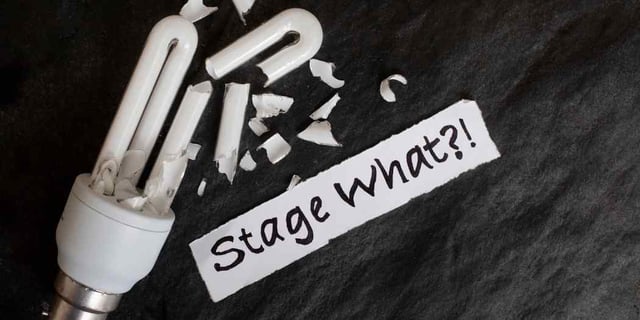Load Shedding in South Africa resumed after Rugby World Cup
Moku |
The Bokke had barely lifted The Webb Ellis Cup when loadshedding resumed in South Africa. On Sunday, 29 October 2023, power utility, Eskom announced that power outages would resume with Stages 2 and 3.
Was load-shedding suspended because of the Rugby World Cup?
According to an article published by BusinessTech, load-shedding was suspended during the world cup because of a decreased demand of electricity and use of open-cycle gas turbines (OCGTs). Because of this, South Africans were able to enjoy uninterrupted power for 9 days during The Rugby World Cup.
The lower demand for electricity can be as a result of:
- The effects of more solar powered installations.
- A more energy-conscious consumer.
Some highlights from Eskom in 2023
- In 2023, the amount of days for load-shedding increased by 215 days. We experienced a total of 280 days of load-shedding (power cuts) in 2023 and 65 days in 2022.
- South African consumers are paying more despite an increase in load-shedding days with a tariff increase of 9.61%.
Some of the effects on the South African economy due to load-shedding
- South African Revenue Service Commissioner, Edward Kieswetter said that because of load-shedding, the revenue service would lose at least R60 billion this year.
- When citing the CSIR report, Kieswetter noted that the South African economy lost R560 billion because of load-shedding.
- According to Chief Economist at The Efficient Group, Dawie Roodt, South Africa has been getting poorer over the last decade and a main contributing factor is our electricity crisis: “... we have been getting poorer for the past 10 years on a per capita basis … one of the major contributors to this is a lack of electricity.”
- According to Roodt, load-shedding has such a big impact on our economy that all economists have to do every quarter when predicting economic growth is simply look at the amount of days we’ve lost due to load-shedding and include this figure into their calculations. They will, because of this, get a pretty accurate estimate of what economic growth is going to be in the country.
A few other sobering stats:
- 29 million people are receiving an income from the government and only 7.7 million people are tax-payers.
- Unemployment is 32.6% in the country.
- When looking at the youth (15-24 years and 25-34 years) the highest unemployment rates were recorded of 60,7% and 39,8% respectively.
Some more practical effects of load-shedding on you:
- The cost of goods and services will increase as businesses cannot absorb all the costs of load-shedding. This means that you will have to bear the brunt of the additional expenses, leading to a decrease in your purchasing power. As a result, you may have noticed that you have to cut back on your spending. This will affect various sectors of the economy.
- Small businesses, in particular, will struggle to stay afloat as they face higher operating costs and reduced customer demand.
- Load-shedding also hampers productivity and efficiency in the workplace. With frequent power outages, businesses are forced to halt operations, causing delays in production and delivery. This not only disrupts supply chains but also tarnishes the reputation of companies, leading to potential loss of customers and revenue.
- The impact of load-shedding extends beyond the economic realm and affects the daily lives of individuals. Without a stable power supply, households are left in the dark, both literally and figuratively. Basic activities such as cooking, studying, and even accessing essential services like healthcare become challenging. This further exacerbates the already dire situation for those living in poverty or marginalized communities.
- Furthermore, load-shedding perpetuates a cycle of inequality in the country. As the unemployment rate soars, particularly among the youth, the lack of reliable electricity only adds to their struggles in finding employment opportunities. Without access to electricity, individuals are unable to acquire the necessary skills or engage in online job searches, further limiting their chances of escaping poverty.
- Although load-shedding has increased, you still now have to fork out more money for electricity since the increase that came into effect this year. From April 2023 Eskom customers would've noticed an increase in the price of electricity. Since July 2023, municipal customers would have experienced the increase.
Top tips from the Daily Maverick on how you can save electricity
- Change your lightbulbs from energy-intensive fluorescent tubes to LED (Light Emitting Diode) tubes.
- When charging your inverter, set the charging rate at slow so that you don’t have as much of a heavy impact on the grid.
- Remember everyone who has an inverter is charging it just before load-shedding. This increases the pressure on the grid.
- Check your energy rating of your geyser.
- A++ is the most energy efficient and the worst is D. You should, however, ensure that you are not above a minimum of B.
- Try experimenting with switching your geyser off just before you get into the shower.
- Practically this looks like heating it for 2 to 3 hours and then switching it off just before you get into the shower.

